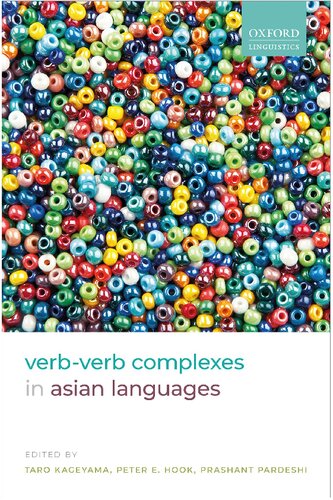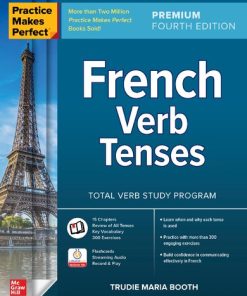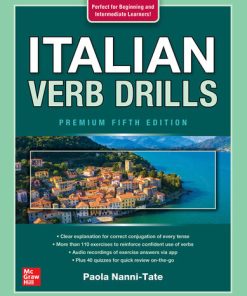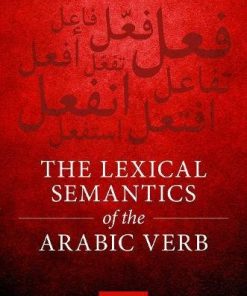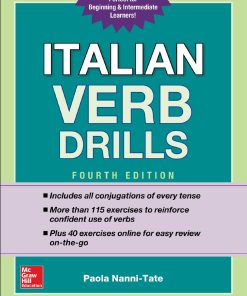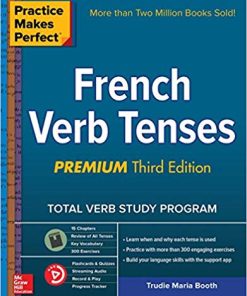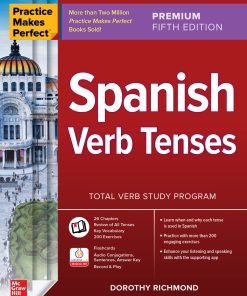Verb-Verb Complexes in Asian Languages Taro Kageyama
$50.00 Original price was: $50.00.$25.00Current price is: $25.00.
Verb-Verb Complexes in Asian Languages Taro Kageyama – Ebook Instant Download/Delivery ISBN(s): 9780198759508,9782021931020,0198759509,2021931021, 9780191077432, 0191077437

Product details:
- ISBN 10: 0191077437
- ISBN 13: 9780191077432
- Author: Taro Kageyama
This volume is the first to present a detailed survey of the systems of verb-verb complexes in Asian languages from both a synchronic and diachronic perspective. Many Asian languages share, to a greater or lesser extent, a unique class of compound verbs consisting of a main verb and a quasi-auxiliary verb known as a ‘vector’ or ‘explicator’. These quasi-auxiliary verbs exhibit unique grammatical behaviour that suggests that they have an intermediate status between full lexical verbs and wholly reduced auxiliaries. They are also semantically unique, in that when they are combined with main verbs, they can convey a rich variety of functional meanings beyond the traditional notions of tense, aspect, and modality, such as manner and intensity of action, benefaction for speaker or hearer, and polite or derogatory styles in speech. In this book, leading specialists in a range of Asian languages offer an in-depth analysis of the long-standing questions relating to the diachrony and geographical distribution of verb-verb complexes. The findings have implications for the general understanding of the grammaticalization of verb categories, complex predicate formation, aktionsart and event semantics, the morphology-syntax-semantics interface, areal linguistics, and typology.
Table contents:
1: Introduction
2: Between lexical verbs and auxiliaries: The architecture of Japanese verb-verb complexes
3: Verb verb complex predicates in Old and Middle Japanese
4: Grammaticalization and constructionalization in Japanese lexical compound verbs
5: Syntactic verb-verb compounds in Japanese
6: The semantic differentiation of verb-te verb complexes and verb-verb compounds in Japanese
7: Verb-verb complexes in Irabu Ryukyuan
8: Korean verb-verb sequences
9: Classification of complex verbs and the evolution of the compound verb in Marathi
10: Development of verb-verb complexes in Indo-Aryan
11: The Hindi-Urdu compound verb and its covert semantics: Births, earthquakes, meteors, and other a
12: The matrix of verb-verb sequences in Tamil
13: Verb + verb sequences in Dravidian
14: Semantically related verb verb combinations in Tibetan and Ladakhi: 1300 years of stable transit
15: Verb–verb complexes in Turkic languages: Interaction of lexical and delexicalized verbs
16: Verb-verb complexes in Central and Eastern Turkic languages
17: Turkish and Uyghur verb-verb complexes in contrast
18: Verb-verb complexes in Avar
19: Verbal complexes in Thai
People also search:
chinese verb-object compound examples
complex chinese sentence structure
do asian languages have a common root
asian languages comparison
east asian conlang
You may also like…
Languages - French Language Reference
Politics & Philosophy - Anthropology
dictionaries & phrasebooks
Languages - Italian Language Reference
Languages - French Language Reference
Languages - Spanish Language Reference
Practice Makes Perfect Spanish Verb Tenses 4th Edition by Dorothy Richmond 1260452468 9781260452464
Languages - Romance Languages Reference
dictionaries & phrasebooks
Spanish Verb Tenses Dorothy Richmond 9781265098858 1265098859


